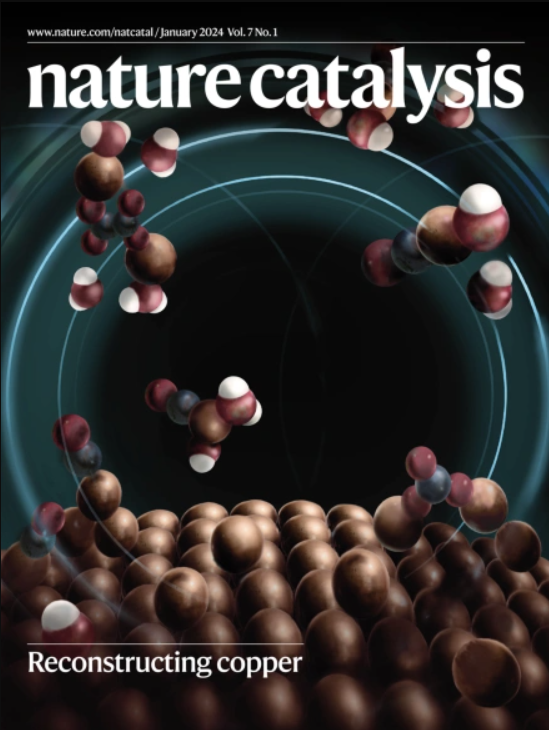一种高效可再生的Ir1-Cu1双原子烷烃低温脱氢催化剂
IF 44.6
1区 化学
Q1 CHEMISTRY, PHYSICAL
引用次数: 0
摘要
烷烃脱氢作为生产烯烃的直接途径,受到了工业界和学术界的广泛关注。然而,在烷烃脱氢过程中,通常需要高温(>550℃)来破坏C - h键,从而导致有害的副反应。本文通过制备可再生的Ir1-Cu1双原子催化剂,降低了正丁烷脱氢反应的温度。该体系在450℃下的转换频率为2.45 s−1,是单原子Ir1/ND@G催化剂的6.3倍,同时C4烯烃的选择性高达98%。重要的是,Ir1-Cu1双原子催化剂成功的关键是其有利的立体几何构型和调制的电子性质,这可以降低C-H活化的反应势垒,改变速率决定步骤,促进产物的脱附。因此,在相对较低的温度(≤450℃)下,正丁烷脱氢活性显著。本文章由计算机程序翻译,如有差异,请以英文原文为准。


A highly efficient and regenerable Ir1–Cu1 dual-atom catalyst for low-temperature alkane dehydrogenation
Alkane dehydrogenation as a direct route to produce olefins receives widespread attention from industry and academia. However, high temperatures (>550 °C) are often needed to break C–H bonds, leading to deleterious side reactions in the alkane dehydrogenation process. Here we reduce the reaction temperature of n-butane dehydrogenation by fabricating a robust and regenerable Ir1–Cu1 dual-atom catalyst. The so-prepared system shows a turnover frequency of 2.45 s−1 at 450 °C, which is 6.3 times higher than the single-atom Ir1/ND@G catalyst, while, at he same time, achieving a high C4 olefin selectivity of 98%. Importantly, key for the success of the Ir1–Cu1 dual-atom catalyst are the sterically favourable geometric configuration and the modulated electronic property, which can lower the reaction barrier for C–H activation, shift the rate-determining step and facilitate the desorption of the product. Thus, a remarkable activity can be achieved for n-butane dehydrogenation at relatively low temperature (≤450 °C). Supported single atoms are promising catalysts for alkane dehydrogenation, although tuning their reactivity via active site modulation remains a challenge. Here the authors introduce an Ir1–Cu1 dual-atom catalyst for n-butane dehydrogenation that outperforms the corresponding Ir1 single-atom system.
求助全文
通过发布文献求助,成功后即可免费获取论文全文。
去求助
来源期刊

Nature Catalysis
Chemical Engineering-Bioengineering
CiteScore
52.10
自引率
1.10%
发文量
140
期刊介绍:
Nature Catalysis serves as a platform for researchers across chemistry and related fields, focusing on homogeneous catalysis, heterogeneous catalysis, and biocatalysts, encompassing both fundamental and applied studies. With a particular emphasis on advancing sustainable industries and processes, the journal provides comprehensive coverage of catalysis research, appealing to scientists, engineers, and researchers in academia and industry.
Maintaining the high standards of the Nature brand, Nature Catalysis boasts a dedicated team of professional editors, rigorous peer-review processes, and swift publication times, ensuring editorial independence and quality. The journal publishes work spanning heterogeneous catalysis, homogeneous catalysis, and biocatalysis, covering areas such as catalytic synthesis, mechanisms, characterization, computational studies, nanoparticle catalysis, electrocatalysis, photocatalysis, environmental catalysis, asymmetric catalysis, and various forms of organocatalysis.
 求助内容:
求助内容: 应助结果提醒方式:
应助结果提醒方式:


